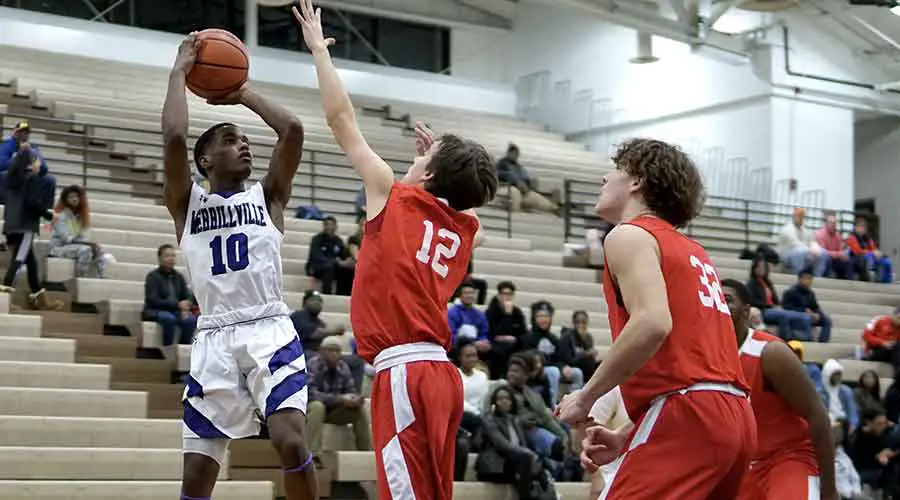Double team
In basketball, mastering various defensive strategies is essential to achieve success on the court. One of the most effective tactics employed by teams is the double team. This technique involves two defensive players actively guarding a single offensive player, typically one who poses a significant scoring threat. While the concept is simple, employing this strategy effectively requires a solid understanding of positioning, timing, and communication.
Understanding the double team begins with recognizing when and why it is used. Coaches may call for a double team in situations where one player appears to be dominating the game offensively, or to disrupt the flow of the opposing team’s plays. Importantly, this defensive tactic is not without its risks. By dedicating two defenders to one player, the defensive team leaves opposing players unguarded, potentially resulting in open shots or passes.
However, when executed correctly, double teaming can force turnovers, alter shots, or slow down the offense. Teams that communicate effectively and quickly rotate their players to recover from the temporary imbalance created by using a double team can greatly enhance their defensive prowess and maintain control throughout the game.
Understanding Double Team in Basketball
Definition and Objective
A double team in basketball refers to a defensive tactic where two defensive players are assigned to guard a single offensive player. The primary objective of a double team is to severely limit an opposing player’s production by applying simultaneous defensive pressure. This strategy can be implemented as a pre-planned move or spontaneously during a game.
Common Scenarios
Double teaming can be employed in various situations during a basketball game. Some common scenarios where a double team is applied include:
- Post play: Double teaming can be used to contain a dominant post player by having a secondary defender collapse on the post player as soon as they catch the ball, making it difficult for them to score or pass effectively.
- Pick and roll: When an offensive player uses a screen to create separation from their defender, the defenders can opt to double team the ball handler, forcing them to make a tough pass or take a difficult shot.
- Perimeter play: If an offensive player is a prolific shooter, a double team can be applied on the perimeter, denying them an open shot and pressuring them to give up the ball.
- Late game situations: In situations where the game clock is running low and the offensive team is looking for a last-second shot, a double team can be utilized to force a bad shot or create a turnover.
In all these scenarios, effective communication and quick decision-making among defensive teammates are crucial for successfully executing a double team strategy.

Implementing a Double Team Strategy
Selecting Players for the Double Team
When planning a double team strategy, it’s crucial to choose the right defensive players to guard the targeted offensive player. Ideally, the two defenders should possess quickness, good communication skills, and strong defensive instincts. It’s also beneficial if the primary defender is experienced and can read the offensive player’s movements effectively. The secondary defender should be agile and able to quickly adjust their positioning based on the primary defender’s actions.
Timing and Positioning
The success of a double team strategy greatly depends on proper timing and positioning. The two defenders must work in sync to apply pressure on the offensive player, while also limiting their own vulnerabilities. To achieve this, they need to quickly recognize when the ideal moment for initiating a double team arises.
Here are a few key moments when a double team could be effective:
- As the offensive player catches the ball: By applying immediate pressure before the offensive player can make a move, it can disrupt their rhythm and force them to make a quick decision.
- When the dribbler is moving: Attacking a moving dribbler can lead to turnovers, as they might be unprepared for the sudden defensive adjustment.
- During a ball screen: When the offensive player uses a ball screen, the two defenders can work together to trap them and limit their scoring options.
Keep in mind that timing is of the essence, and moving too early or too late can leave the defense vulnerable. Proper positioning also plays a crucial role, as the defenders need to maintain an optimal distance from the offensive player to limit their options while minimizing the risk of getting beaten off the dribble.
Countering a Double Team
Effective Passing
One way to counter a double team in basketball is by implementing effective passing strategies. When a player is being double-teamed, their passing options may be limited, making it essential for teammates to be in a position to help.
- Quick passes: Making quick and precise passes to open teammates can help dismantle the double team and create scoring opportunities.
- Skip passes: A skip pass is thrown over the top of the defense, allowing the player to bypass the double team and find a teammate on the opposite side of the court.
- Ball reversal: Reversing the ball through multiple teammates can force the defense to adjust, ultimately breaking down the double team.
Utilizing Offensive Spacing
Offensive spacing is crucial when countering a double team, as it forces the defense to cover a larger area and allows for better passing and cutting opportunities.
- Maintain proper spacing: Teammates should maintain proper spacing from each other, typically 12 to 15 feet apart, to prevent defenses from effectively doubling.
- Move without the ball: Players must be constantly moving without the ball to create open lanes and receive passes from the double-teamed player.
- Positioning around the perimeter: Having teammates positioned around the perimeter can stretch the defense and create open passing lanes for the player being double-teamed.
By focusing on effective passing and utilizing offensive spacing, players can successfully counter a double team, ultimately leading to more productive offensive possessions and increased scoring opportunities.
